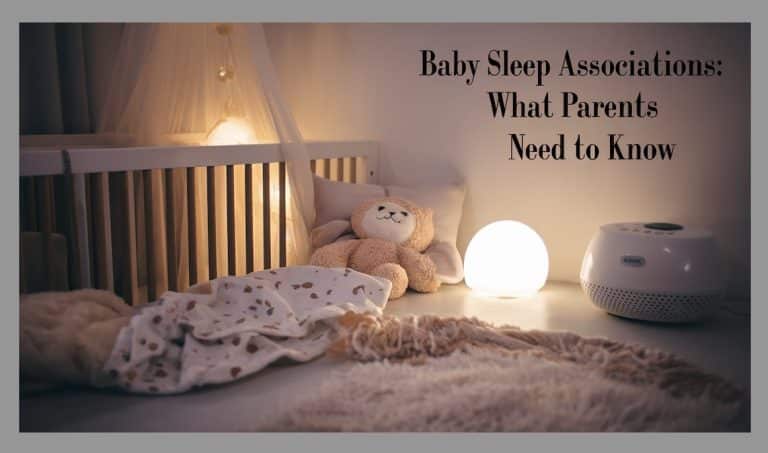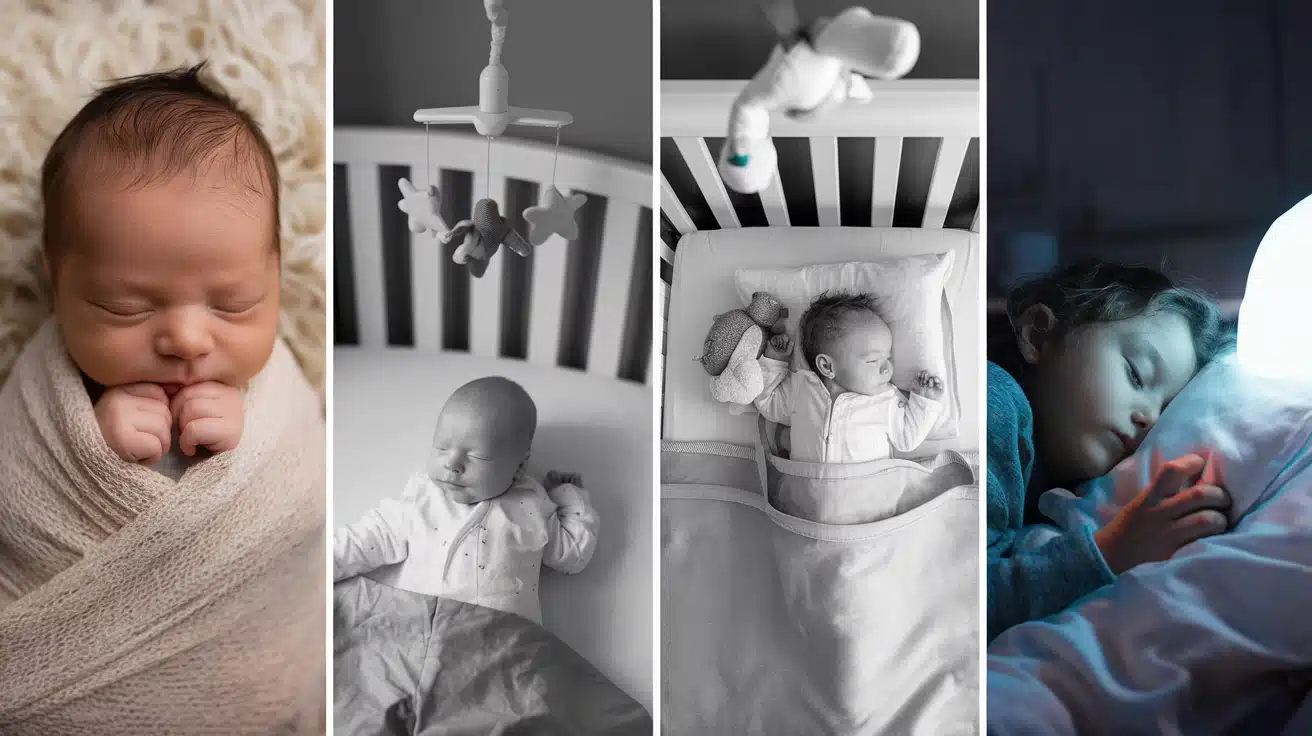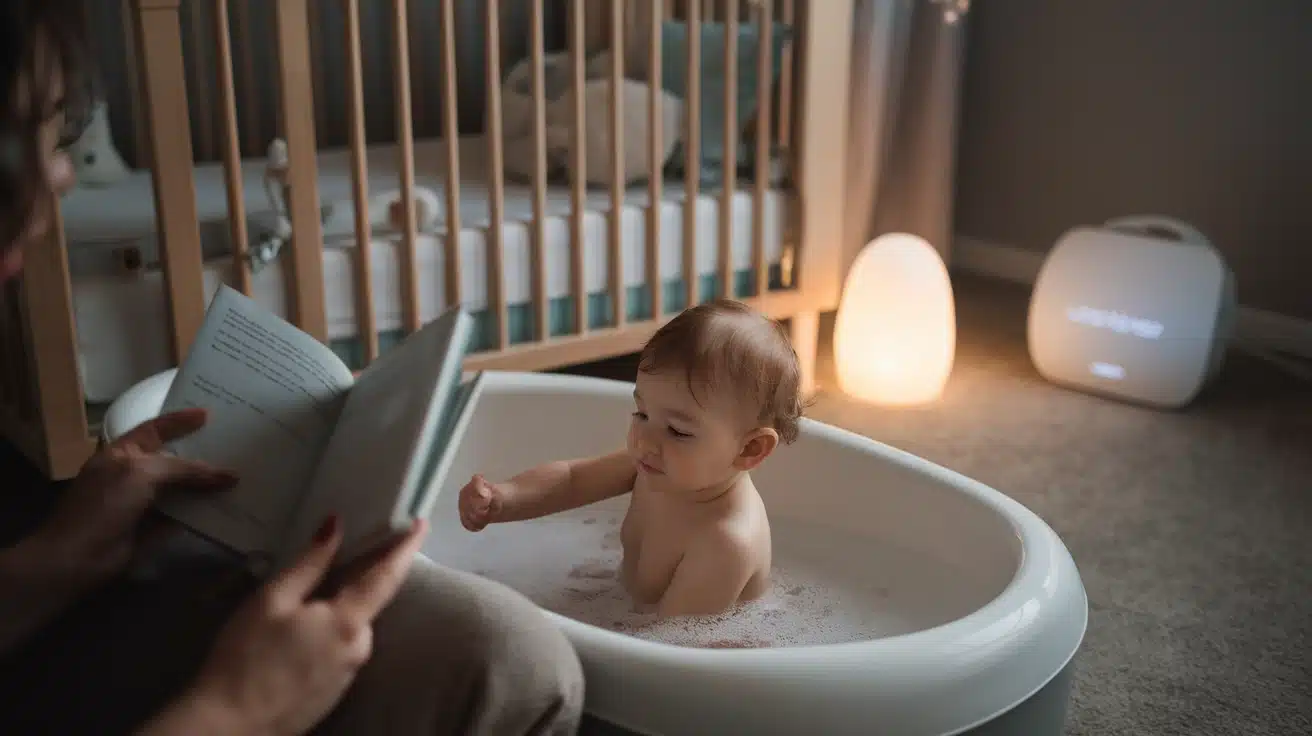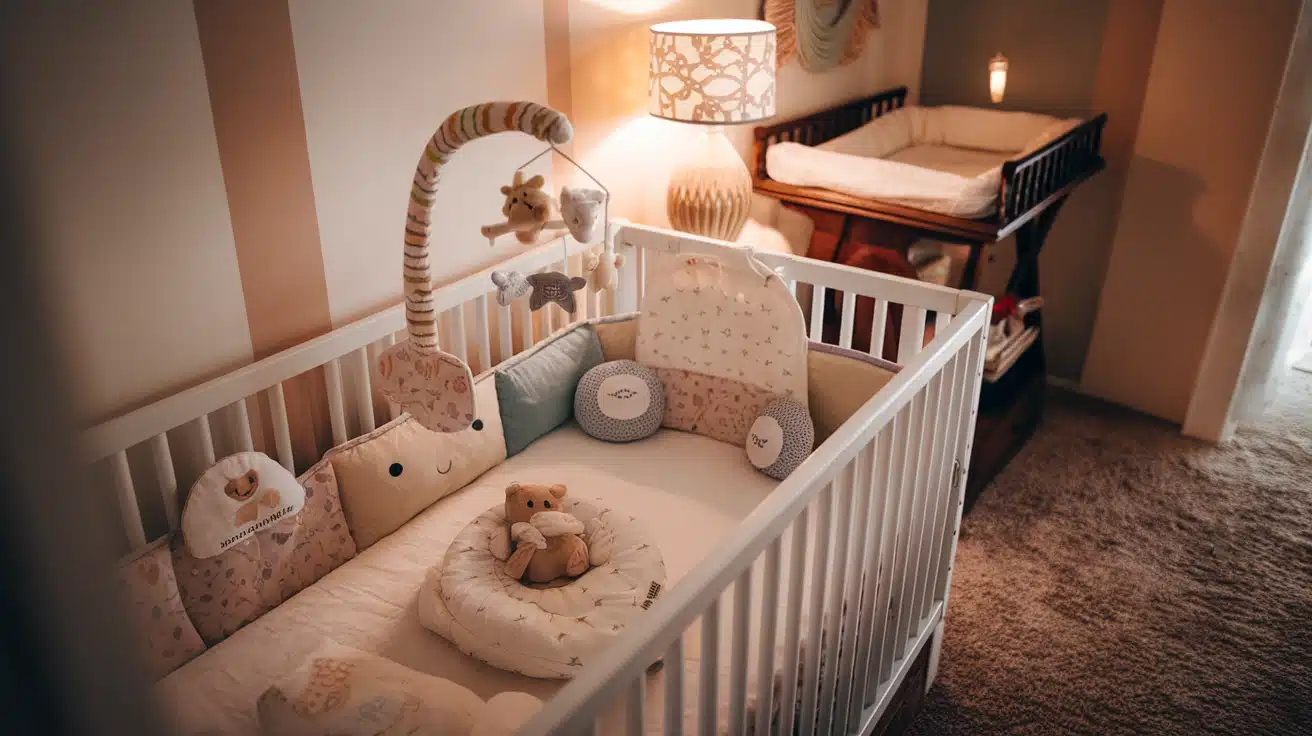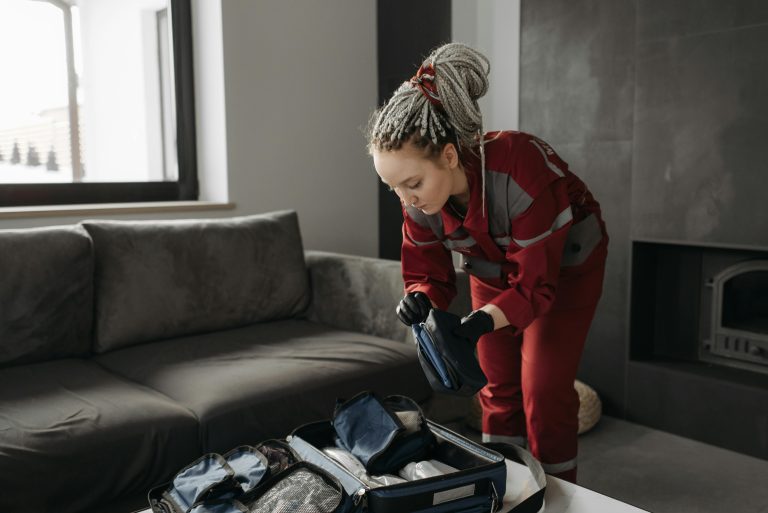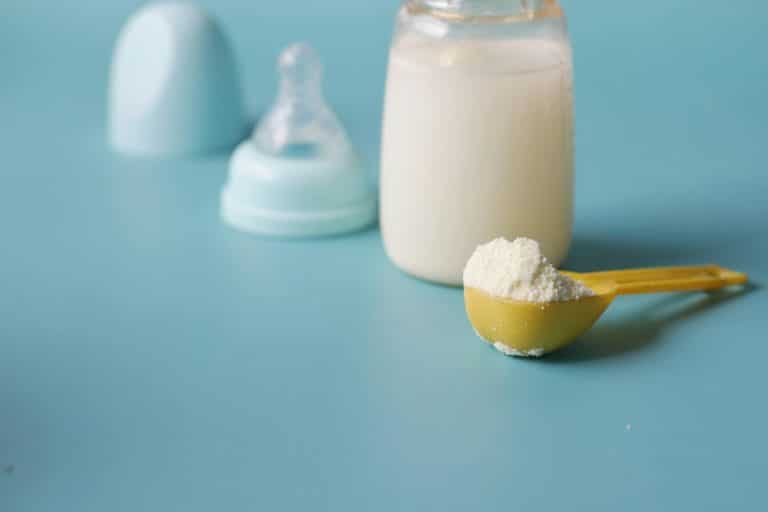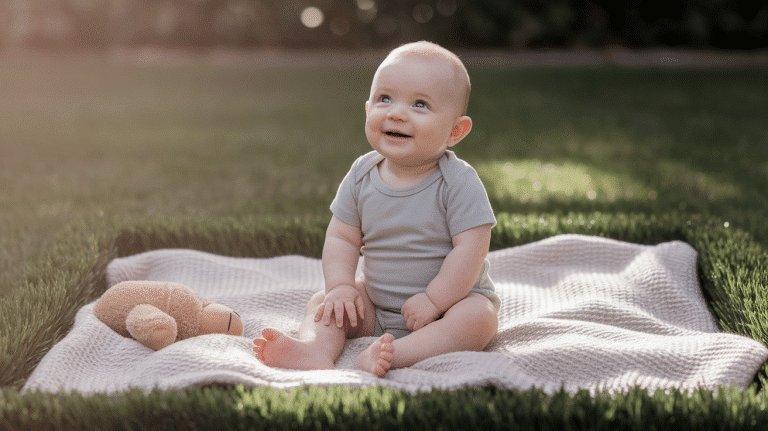Baby sleep associations play a significant role in how your child falls asleep and stays asleep throughout the night.
These associations are the habits or items babies rely on to settle themselves at bedtime.
While some sleep associations can promote independent sleep, others may create difficulties when your baby wakes up and needs the same conditions to fall back asleep.
For example, if your baby is used to being rocked or nursed to sleep, they’ll likely wake during the night looking for the same comfort.
The key to improving your baby’s sleep routine is recognizing the difference between positive and negative sleep associations.
In this guide, we’ll help you understand these associations and how they impact sleep patterns.
What Are Baby Sleep Associations?
Baby sleep associations are habits, objects, or routines that babies connect with falling asleep.
These associations can be comforting actions like rocking, nursing, or hearing a lullaby.
Essentially, they’re the triggers that signal to your baby that it’s time to sleep.
Babies with positive associations can self-soothe and fall back asleep on their own.
Negative associations may cause babies to wake at night, needing parental intervention to fall back asleep.
Recognizing your baby’s sleep associations can help you shift from dependence on external help to promoting independent sleep habits for more restful nights.
Understanding Positive vs. Negative Sleep Associations
Positive sleep associations encourage independent sleep and self-soothing.
These include things like white noise, a consistent bedtime routine, or a soft lovey (age-appropriate). These tools provide comfort and help babies settle themselves back to sleep without intervention.
Negative sleep associations occur when a baby depends on external factors, like being rocked, fed, or held, to fall asleep.
While these methods may work initially, they often lead to frequent night wakings, as the baby requires the same conditions to return to sleep.
| Aspect | Positive Sleep Associations | Negative Sleep Associations |
|---|---|---|
| Definition | Habits or objects that help babies self-soothe and fall asleep independently. | Habits that require parental involvement for the baby to fall asleep or return to sleep. |
| Examples | White noise, bedtime story, comfort item (lovey), sleep sack. | Rocking, nursing, or bottle-feeding to sleep, pacifier dependence, holding or patting. |
| Impact on Sleep | Encourages longer, uninterrupted sleep as babies learn to self-soothe. | It causes frequent night wakings when babies need the same conditions to fall back asleep. |
| Ease of Transition | It is easier to maintain and promote healthy sleep habits. | It is difficult to change as babies become reliant on these habits. |
| Long-Term Effect | Supports independent sleep and self-settling skills. | May delay the development of independent sleep skills. |
How Sleep Associations Evolve As Your Baby Grows
Your baby’s sleep needs change over time. What works at two months might not help at six months. Let me explain how these changes happen.
Newborns need feeding and holding to sleep. This helps them feel safe in their first weeks.
By 3-4 months, babies start noticing their sleep space more. They might want rocking, feeding, or songs to fall asleep.
At 6 months, babies can learn to sleep in their own space. Soft music or a light blanket might help them settle down.
Near their first birthday, many babies choose their own sleep items, like a stuffed toy.
Each baby follows their own timing. Some need extra help longer than others. The main goal is to help them feel safe while learning good sleep habits.
Breaking Negative Baby Sleep Associations: Practical Steps
Step 1: Gradually Wean Off Negative Associations
Start by reducing the time spent on activities like rocking or feeding your baby to sleep.
Rock your baby for shorter periods each night, eventually putting them down drowsy but awake. This will help them learn to self-settle.
Step 2: Introduce Positive Sleep Associations
Introduce soothing bedtime routines, such as playing white noise or using a soft toy.
These positive associations create a calm environment, encouraging independent sleep without constant parental intervention.
Step 3: Encourage Self-Soothing
Give your baby time to self-soothe when they wake up at night.
Allowing them to settle themselves helps build their confidence in sleeping independently. Stay consistent and patient as they adjust.
Creating Healthy Bedtime Routines With Positive Sleep Associations
Components of A Soothing Bedtime Routine
A warm bath helps your baby relax and transition from an active state to a sleepy one.
Reading or singing creates a calming atmosphere and strengthens the bond between you and your baby.
Dimming the lights signals bedtime, and white noise helps drown out disruptive sounds, creating a peaceful environment.
Using Comfort Items Safely
Ensure comfort items like a lovey or sleep sack are safe and age-appropriate.
Avoid small parts or items that could pose choking hazards, and use breathable, non-toxic materials.
A sleep sack is a safe alternative to blankets and helps keep your baby cozy without risk.
These steps promote positive sleep associations and help your baby sleep better independently.
Creating Healthy Bedtime Routines
Small steps before bed help your baby know it’s time to sleep. Start with a warm bath, put on cozy pajamas, and spend quiet time in their sleep space.
Keep your routine brief – 20-30 minutes works well. Read a small book, sing a soft song, or give gentle cuddles. Do these steps in the same order each night.
For safety, babies under one year need only a fitted sheet – no blankets, pillows, or toys. After one year, you can add a light blanket or soft toy.
Stay consistent with the routine, even on busy nights. This helps your baby feel secure and ready for rest.
Common Challenges And How To Handle Them
1. Separation Anxiety
Separation anxiety can make bedtime difficult, as babies may feel distressed when separated from their parents.
To ease this, maintain a calm and reassuring presence during bedtime.
Gradually reduce the time spent in the room, allowing your baby to feel more secure and comfortable falling asleep independently.
2. Pacifier Dependence
If your baby constantly wakes when the pacifier falls out, gently wean them off by introducing a substitute comfort item like a soft blanket.
Gradually phase out the pacifier while offering the comfort item to help your baby self-soothe.
3. Transitioning from Rocking or Feeding to Sleep
To transition away from rocking or feeding to sleep, gradually reduce the amount of time spent on these actions.
Start by putting your baby down drowsy but awake, allowing them to fall asleep independently over time. Consistency is key for this transition.
Conclusion
Understanding and managing baby sleep associations is essential for creating healthy sleep habits.
Positive sleep associations, like a consistent bedtime routine or comfort items, promote independent sleep and self-soothing, leading to longer, more restful nights.
Conversely, negative sleep associations, such as feeding or rocking to sleep, can result in frequent night wakings and reliance on parental intervention.
By gradually transitioning away from negative habits and fostering positive sleep cues, you can help your baby sleep better independently.
Be patient and consistent, as changing sleep associations takes time. Remember, every baby is different, so find what works best for your family.
With the right approach, your baby will develop lasting, healthy sleep patterns that benefit everyone.

